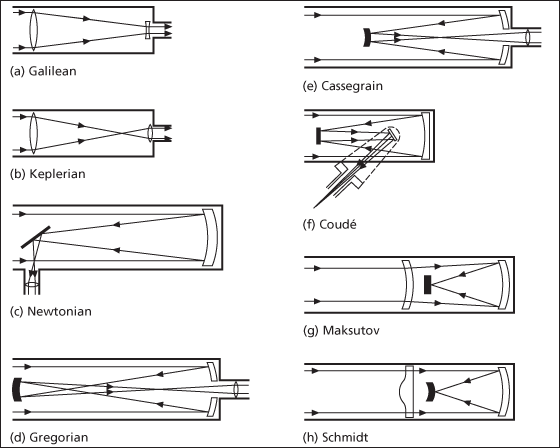Optical astronomical telescopes fall into two main classes: refracting telescopes (or refractors), which use lenses to form the primary image, and reflecting telescopes (or reflectors), which use mirrors.
Refracting telescopes
The refracting telescopes use a converging lens to collect the light and the resulting image is magnified by the eyepiece. This type of instrument was first constructed in 1608 by Hans Lippershey (1587–1619) in Holland and developed in the following year as an astronomical instrument by Galileo, who used a diverging lens as an eyepiece. The Galilean telescope was later improved by Johannes Kepler (1571–1630), who substituted a converging eyepiece lens. This form is still in use for small astronomical telescopes (the Keplerian telescope).
Reflecting telescopes
The first reflecting telescope was produced by Newton in 1668. This used a concave mirror to collect and focus the light and a small secondary mirror at an angle of 45° to the main beam to reflect the light into the magnifying eyepiece. This design is known as the Newtonian telescope. The Gregorian telescope, designed by James Gregory (1638–75), and the Cassegrainian telescope, designed by Cassegrain (about 1650–1700), use different secondary optical systems. The coudé telescope (French: angled) is sometimes used with larger instruments as it increases their focal lengths.
Catadioptic telescopes
Catadioptic telescopes use both lenses and mirrors. The most widely used astronomical instruments in this class are the Maksutov telescope and the Schmidt camera.
